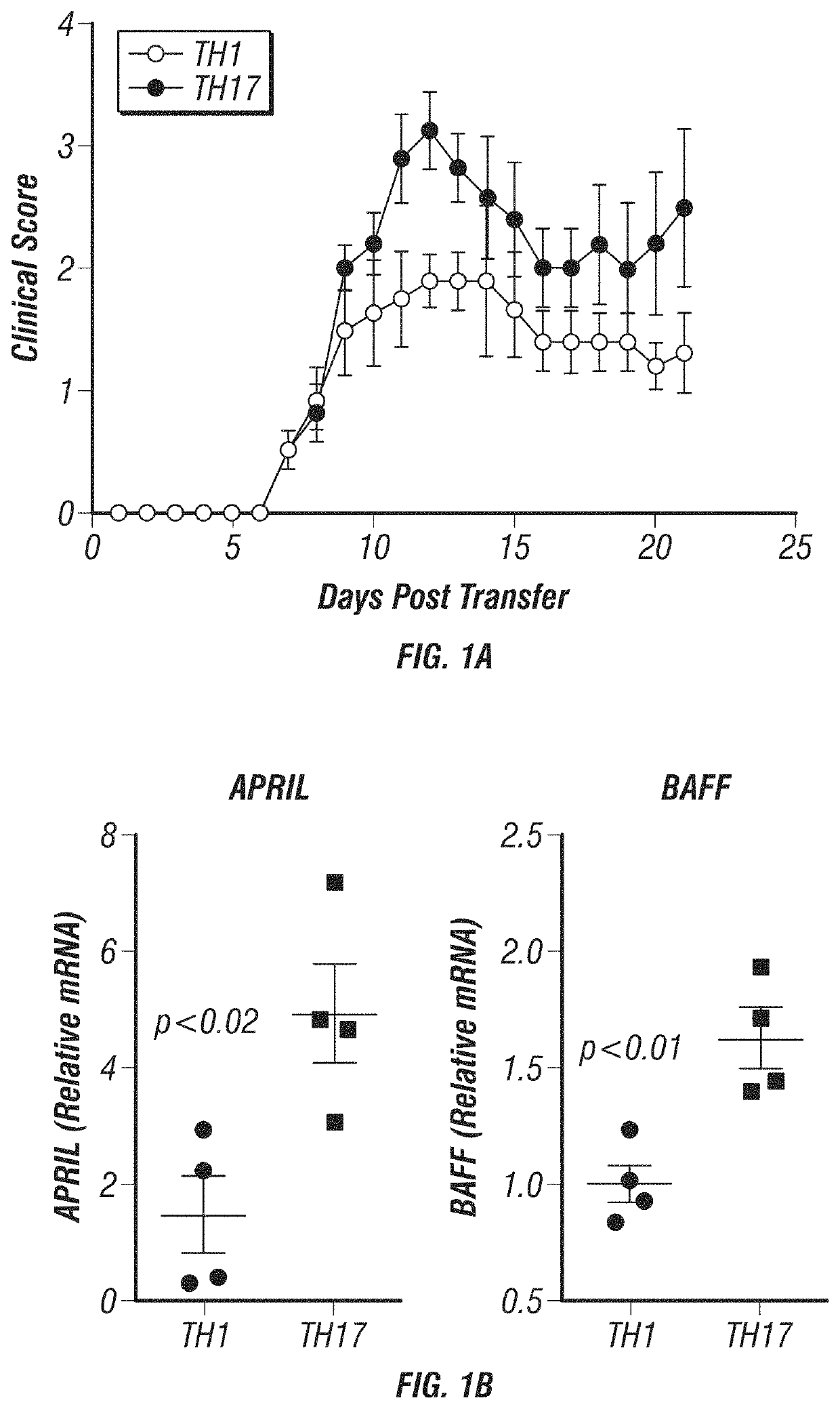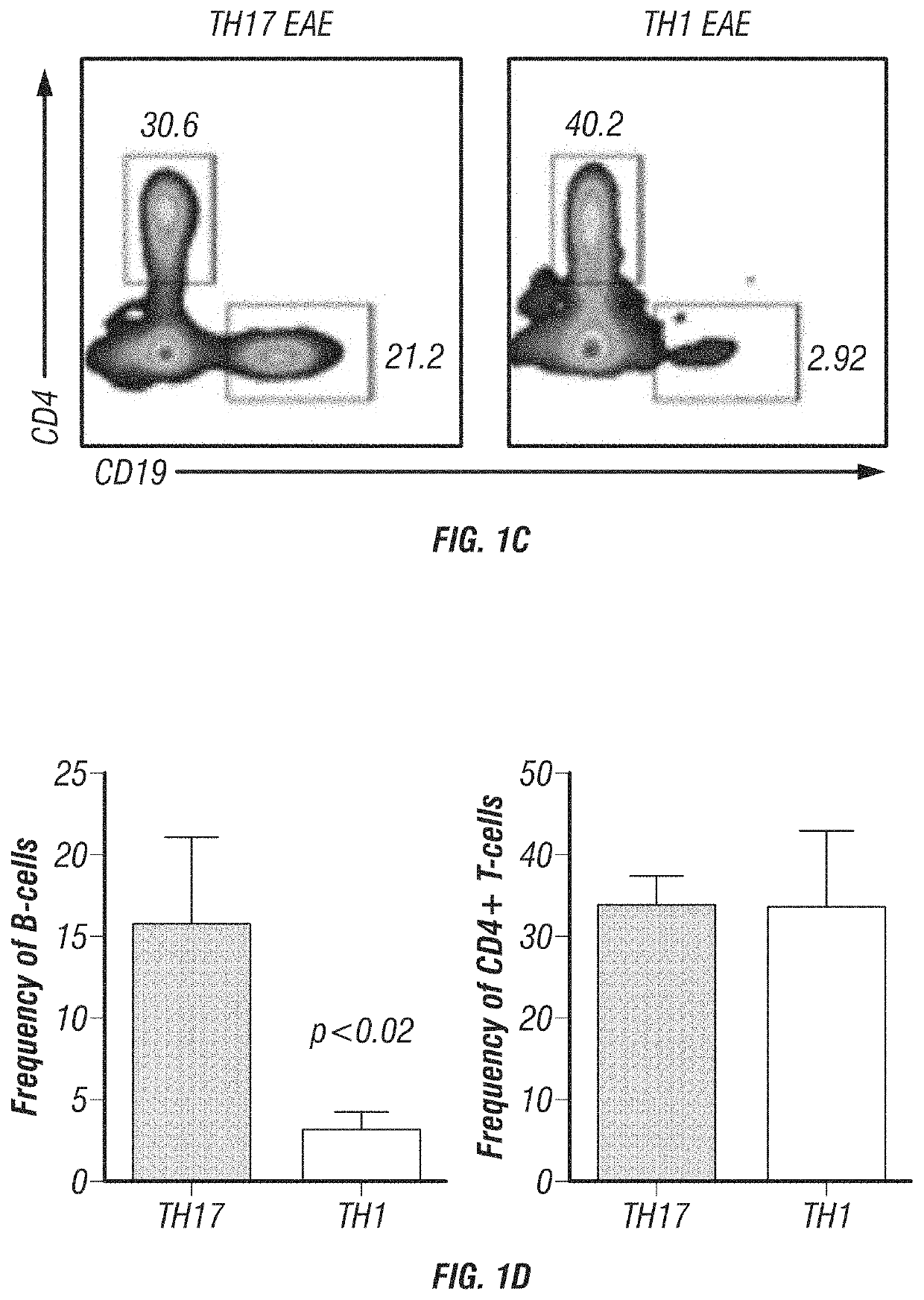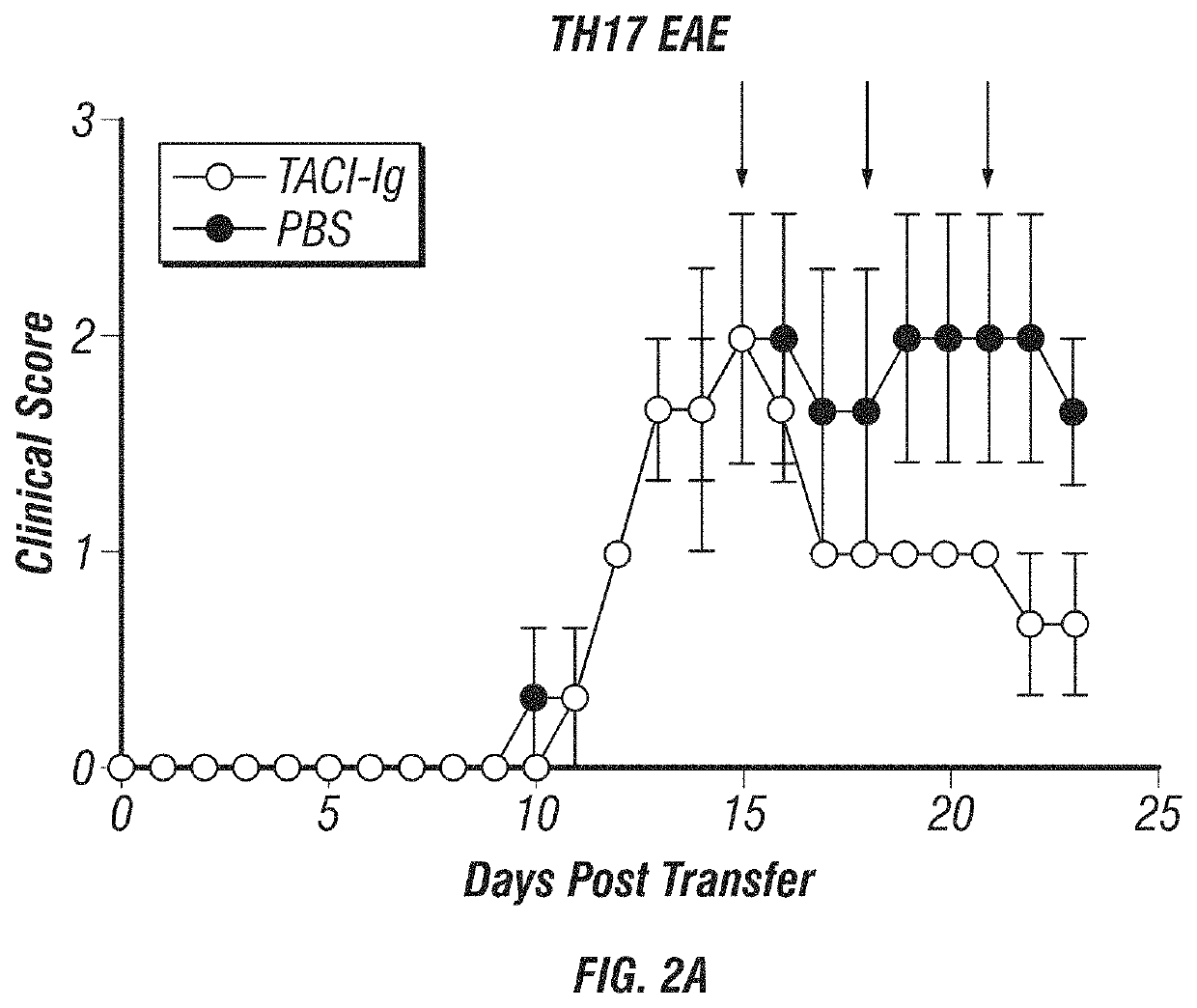Treatment of multiple sclerosis and neuromyelitis optica
a neuromyelitis optica and multiple sclerosis technology, applied in the field of pathology, immunology and molecular biology, can solve the problems of atacicept worsening disease activity in ms patients, and achieve the effect of improving vision impairmen
- Summary
- Abstract
- Description
- Claims
- Application Information
AI Technical Summary
Problems solved by technology
Method used
Image
Examples
example 1
and Methods
[0161]Induction of TH1- and TH17-EAE. To induce TH1- and TH17 EAE, the inventor will immunize donor C57BL / 6 or SJL mice with MOG35-55 or PLP139-151 peptides, respectively, in complete Freund's adjuvant. Ten days post immunization, spleens and lymph nodes from these mice will be harvested and cultured for 3 days with the immunizing antigen in conditions favoring TH1 (IL-12 and anti-IL-4) or TH17 (IL-23, anti-IFNγ and anti-IL-4) differentiation. After culturing, 5-10×106 cells from each condition will be injected intravenously into healthy recipient mice of the same background. Paralysis follows the typical EAE progression and mice will be monitored and scored as follows: 0, normal; 1, tail paralysis; 2, hind limb weakness; 3, complete hind limb paralysis; 4, hind limb paralysis with forelimb weakness and 5, moribund or death (see FIG. 1A).
[0162]Assess the Dynamics of BAFF and APRIL Expression. The first goal of this objective is to assess the expression of BAFF and APRIL t...
example 2
[0169]The inventor's lab has developed and characterized two EAE models that mimic different MS patient populations, TH1-induced EAE and TH17-induced EAE. The inventor initially reported that TH1-EAE mimics an MS phenotype that responds well to IFN-β treatment, whereas the TH17-EAE resembles patients that are IFN-β non-responders (Axtell et al., 2010). The inventor further characterized the phenotypic differences of these two models and found that mice with TH17-EAE have increased disease severity (FIG. 1A) and increased neutrophil infiltration in the CNS compared to mice with TH1-EAE (Herges et al., 2012). The inventor now has data demonstrating that B-cells have differing functions in these two EAE models. The inventor observed that the expression levels of BAFF and APRIL RNA are significantly elevated in the spinal cords of mice with TH17-EAE compared to mice with TH1-EAE (FIG. 1B). In addition, the inventor found that the frequency of CD19+ B-cells were elevated in spinal cords ...
example 3
n
[0172]The data presented here support the hypothesis that B-cells, BAFF and APRIL are inflammatory in TH17 mediated diseases and are conversely anti-inflammatory in TH1 mediated diseases. The expanded studies will definitively prove this hypothesis and in doing so it will provide insights into (i) the inflammatory and regulatory functions B-cells have in autoimmune diseases; (ii) the role differential roles BAFF and APRIL play in TH1- and TH17-induced inflammation; and (iii) the clinical effects of blocking BAFF and APRIL in MS patients.
PUM
| Property | Measurement | Unit |
|---|---|---|
| delay time | aaaaa | aaaaa |
| delay time | aaaaa | aaaaa |
| delay time | aaaaa | aaaaa |
Abstract
Description
Claims
Application Information
 Login to View More
Login to View More - R&D
- Intellectual Property
- Life Sciences
- Materials
- Tech Scout
- Unparalleled Data Quality
- Higher Quality Content
- 60% Fewer Hallucinations
Browse by: Latest US Patents, China's latest patents, Technical Efficacy Thesaurus, Application Domain, Technology Topic, Popular Technical Reports.
© 2025 PatSnap. All rights reserved.Legal|Privacy policy|Modern Slavery Act Transparency Statement|Sitemap|About US| Contact US: help@patsnap.com



